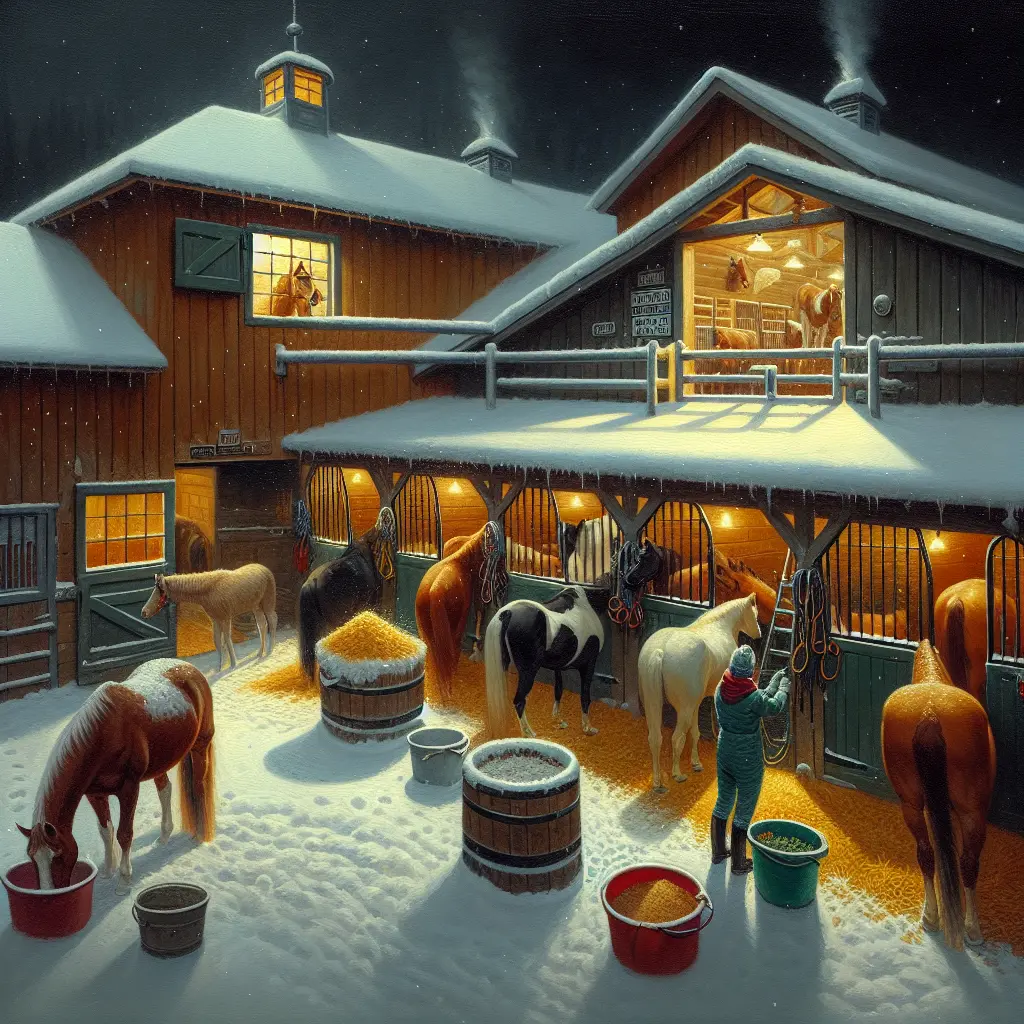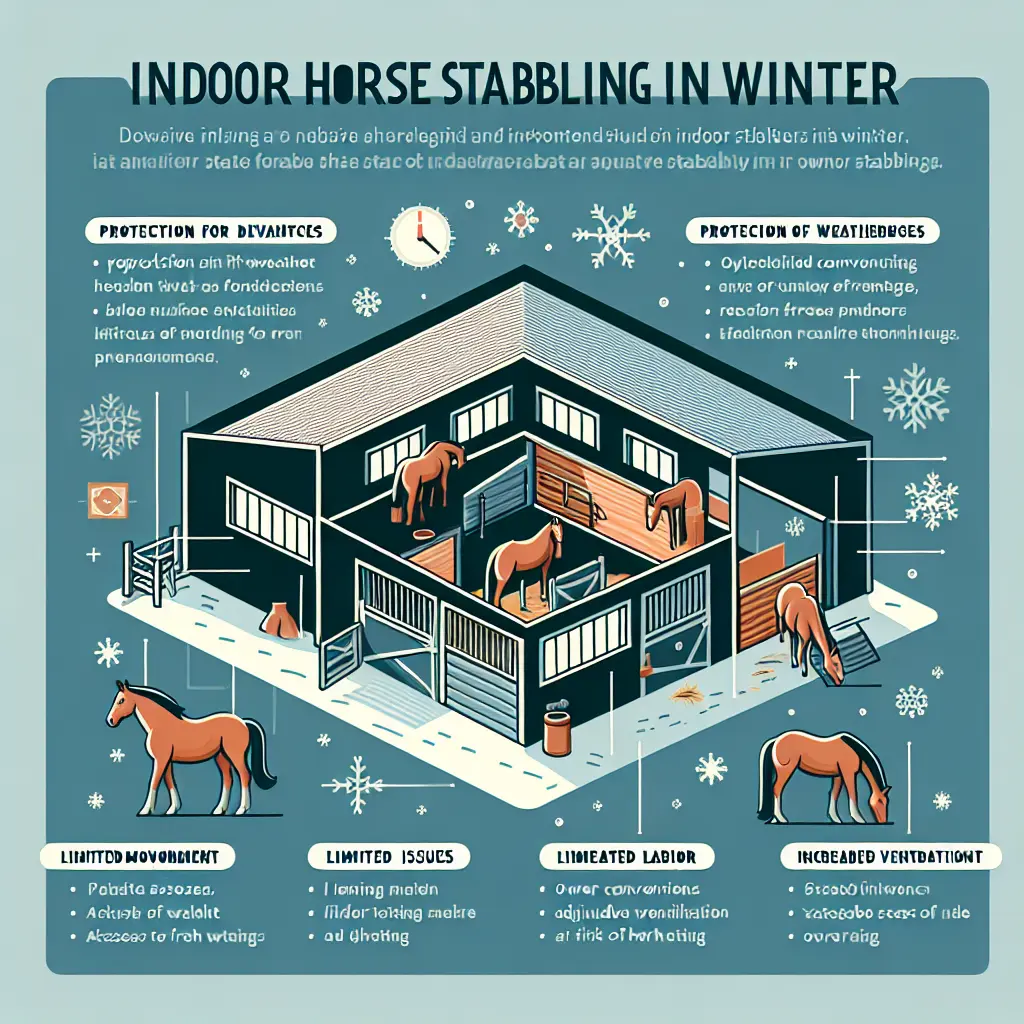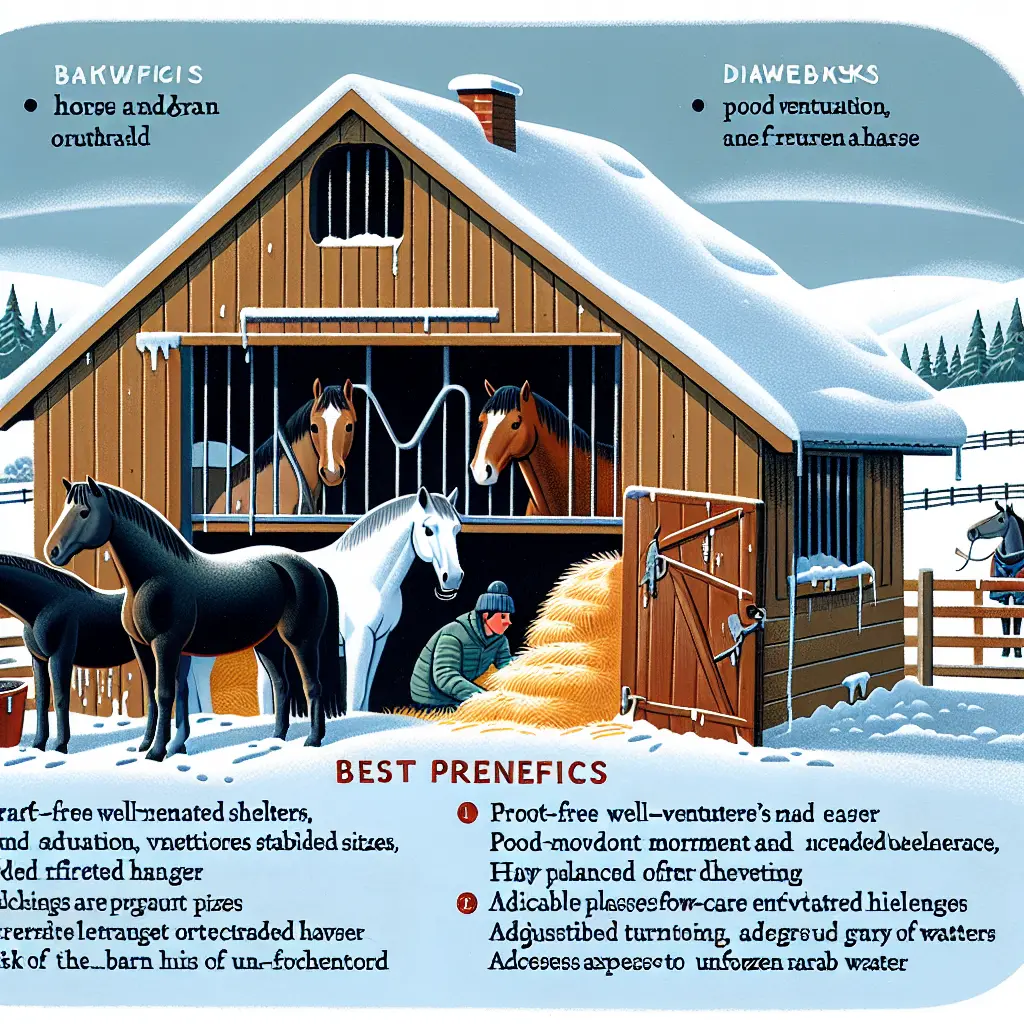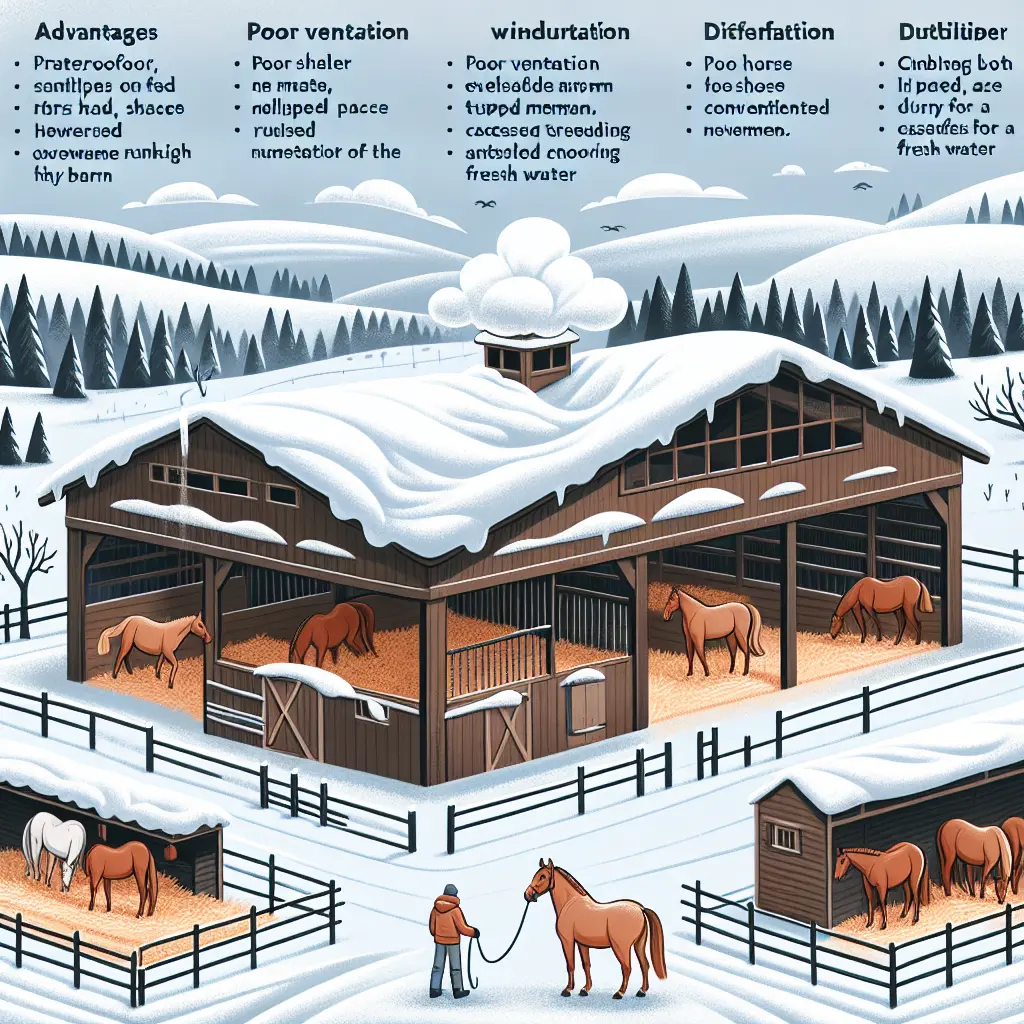Should You Keep Your Horse Indoors at Night During Winter: Pros and Cons Explored
Winter presents a unique set of challenges for horse owners, particularly when deciding whether to stable horses indoors at night. This decision impacts your horse’s health, comfort, behavior, and even your daily management routine. To assist in making an informed decision, this guide delves into the pros and cons of indoor stabling during the cold winter months, supported by expert opinions and practical advice.
Understanding Winter Housing for Horses
Contrary to what some might believe, horses are naturally equipped to handle outdoor living, including tolerating the cold if given appropriate shelter and care. However, severe winter elements like low temperatures, wind chill, and precipitation increase the risk of discomfort or health risks if horses are left entirely outdoors overnight without protection.

Various housing options exist, from open-sided shelters and run-in sheds to fully enclosed barns. Each comes with its set of advantages and limitations, particularly with dropping temperatures and worsening weather conditions.
Pros of Keeping Your Horse Indoors at Night During Winter
Protection from Harsh Weather
Stabling horses indoors offers essential protection from wind, rain, snow, and ice, minimizing weather-related stress. Fully enclosed barns with good ventilation keep horses safe from the elements, which is important since exposure to wet and windy conditions can lead to chills or respiratory issues[1,2,5].
Temperature Regulation and Comfort
Despite horses growing thick winter coats, a stable environment shields them from wind chill, enhancing warmth perception. This indoor shield allows horses to conserve energy rather than expend it keeping warm outdoors, potentially maintaining better condition[5].

Health Monitoring and Management
Stabling also facilitates easier health monitoring, enabling quick spot checks for illness, injury, or discomfort. This is especially crucial for vulnerable populations like young, elderly, or sick horses. Indoor stabling can also simplify timely feedings, watering, and medication administration if necessary[3].
Convenience for Owners
Keeping horses indoors at night can streamline feeding, bedding, and care routines. This setup protects feed from contamination and allows for ample provision of hay and fresh water, which are vital in cold weather to maintain horse body heat[3,4]. Explore our stable rug collection to ensure your horse stays comfortable and warm.
Cons of Keeping Your Horse Indoors at Night During Winter
Reduced Ventilation and Air Quality Concerns
Poorly ventilated barns may trap moisture and ammonia from urine, potentially leading to respiratory problems. Effective ventilation is key to avoiding drafts while ensuring a continuous supply of fresh air[2,5].

Limited Movement and Natural Behavior
Indoor stabling can restrict a horse's movement, potentially leading to stiffness, boredom, and undesirable behaviors. Outdoor turnout is integral for promoting natural grazing and social interactions beneficial for mental and physical health[1,3]. Discover our turnout rug collection for suitable options during outdoor periods.
Higher Labor and Maintenance
Maintaining indoor stables demands regular mucking and bedding replenishment, heightening labor requirements during winter when outdoor work is challenging[1,4]. Our range of jodhpurs and gloves might make this work more comfortable.

Risk of Overheating or Moisture Issues
Enclosed barns may become too warm or humid if ventilation is not maintained properly, leading to excessive moisture that dampens bedding and living areas, increasing risks of skin conditions such as rain rot or thrush[5].
Best Practices for Winter Night Housing
Shelter Design
Consider a waterproof, draft-free, yet well-ventilated pole barn or stable. For milder climates, open-sided shelters facing away from prevailing winds can provide adequate protection[1,2,5].
Space Requirements
Ensure each stall is large enough for horses to stand, turn around, and lie down comfortably, crucial for their overall well-being[5].
Feeding Practices
Place hay at least 150 meters from the shelter to reduce manure buildup and minimize competition among horses[1]. Our equine supplements can ensure nutritional needs are met.
Ventilation
Closely monitor airflow within the barn. Utilizing Dutch doors or adjustable openings can balance essential fresh air with warmth[1,2].
Water Access
Ensure uninterrupted access to fresh, unfrozen water, essential for supporting hydration and thermoregulation in horses[5].
Turnout
Allow daytime turnout when possible, as it helps maintain exercise and natural behaviors vital for horse health.
Conclusion
Whether to keep your horse indoors during winter nights hinges on individual needs, local climate, and your facility infrastructure. Horses benefit from warmth, protection, and convenient care indoors, which is particularly important for vulnerable animals. Nevertheless, adequate ventilation and barn management are crucial to avoid health problems.
Integrating indoor shelter with turnover time optimizes horse welfare during cold months and mitigates risks associated with each approach. Consider horse age, health, and behavior alongside climate factors when designing their winter housing strategy.
For further detailed guidance on horse housing and health considerations, explore expert resources such as the UMass Extension's guide and Michigan State University's considerations.


